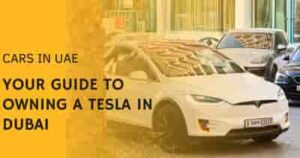
Imitations
A copy, re-creation, or recognition, is “A vehicle that has been changed to seem like another vehicle or truck completely, or like a more helpful form of that equivalent vehicle.” Imitation rebuilding efforts are frequently performed by lovers who need to impersonate explicit intriguing or well-known auto transport, for example, one from a specific film or Network program. One such model is Three-pointers Hmm and his 1970 Pontiac LeMans distributed in Elite Execution Pontiac magazine, which has been reestablished to reproduce a lot more extraordinary Pontiac GTO Judge of that very year, a vehicle which has recorded “sell-off deal costs at well more than $300,000.” Three-pointers are cited in the article saying “‘I truly needed an exemplary GTO, however with the power, ride, and solace to match present-day vehicles — an incredible vehicle to drive. Simultaneously, I would have rather not vigorously change a unique GTO or Judge and put loads of miles on it, since I would feel regretful for deteriorating a piece of history, so I concluded that a recognition vehicle worked as a resto-mod would be my ideal decision.'” A few people inside the auto fan local area object to copy rebuilding efforts because of the earlier cases where a few people performing said reclamations, like transforming a 1967 Pontiac LeMans into a replication of a Pontiac GTO of that very year, a more extraordinary model, and deceitfully selling it publicized.
Protection of outside wear
- Protection of outside wear is described as leaving a rare vehicle’s body and paint unrestored and in an ‘as-is’ condition, or by safeguarding patina. Patina depicts a vehicle’s outside which has “a characteristic completion that embraces the long stretches of wear, tear, and fix a vehicle has procured during many years of administration.” One-of-a-kind vehicles with patina are frequently Esteemed for their innovation and verifiable importance, not for the nature of rebuilding.
- David Gooding, pioneer and leader of Gooding and Company exemplary vehicle barters depicts patina as “the fingerprints of the producers there, and the proprietor. You take a gander at a vehicle with extraordinary patina and you realize it has a person like nothing else. It has a character, a one-of-a-kind character, and when you see those vehicles get reestablished – they just thoroughly lose it. Everything gets purged and wiped off and polished and afterward, it’s very much like all the other things, and back down to a level.”
- Instances of this style of protection/reclamation incorporate Steven Henderson’s 1928 Passage Model A distributed in Hemmings Engine News magazine, alongside Matt Exhaust’s 1960 Portage F-100 distributed in Diesel Power magazine. Henderson purchased his ’28 Passage with 80 years of body and paint wear however chose exclusively to take the vehicle back to running condition and left the outside as it was.
- Henderson’s justification for doing as such, as per him, was to safeguard its personality and creativity. Exhaust purchased his ’60 Passage pickup with many years of wear and staining, yet as indicated by him, he concluded it was ideal to safeguard its flaw by covering it with a saving clear coat.
Mechanicals rebuilding
The gas-powered motor requires customary support to guarantee its proceeded capability. Motor oil, power directing and brake liquid are instances of motor support that should be kept and checked at customary spans. Frequently mileage over the long run can leave a motor absolutely unusable, in which case the restorer could eliminate the current motor and supplant it with a comparative or present-day motor substitute. To lead a motor reclamation initial an expert will direct an exhaustive review. Frequently pre-reestablished vehicles have motors that have done without upkeep for a really long time and hence require motor reclamation to return them to working request. The motor is taken out from the vehicle and investigated for broken and non-practical parts. Average parts that require supplanting incorporate cylinders, flash fittings, fuel lines, batteries, wires, crankshaft belts, and different gaskets. All are dependent upon crumbling over the long run. Primary parts like the motor block, camshaft, and driving rod are more averse to requiring fixing however normal. Regularly, after totally required parts are assembled, the dismantled pieces will be cleaned, greased up (whenever required), and reassembled. The motor is then supplanted inside the vehicle.




